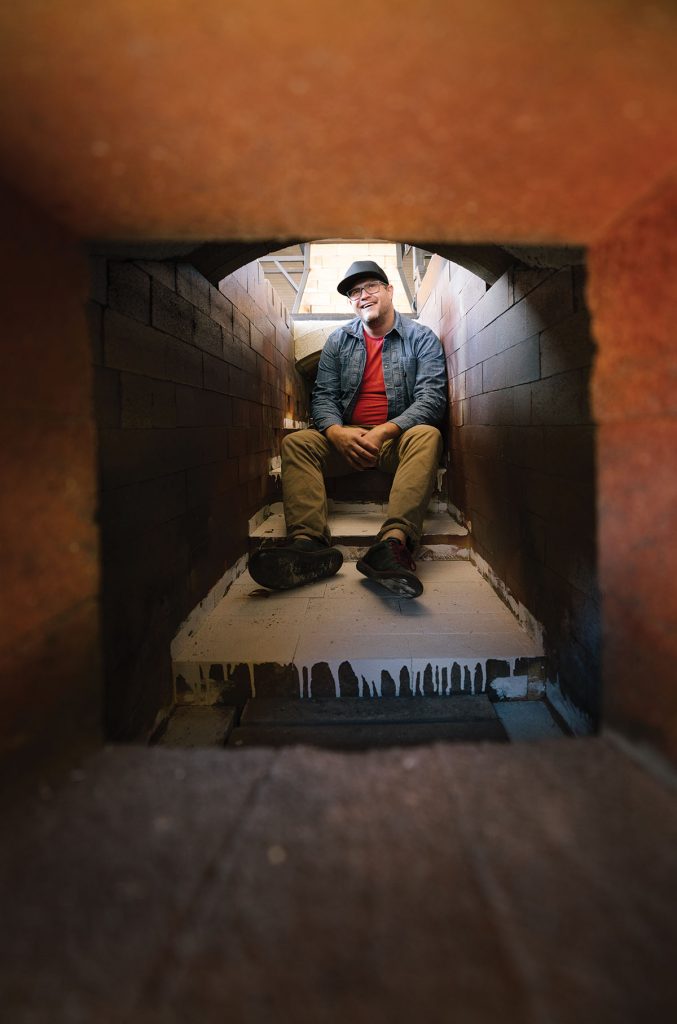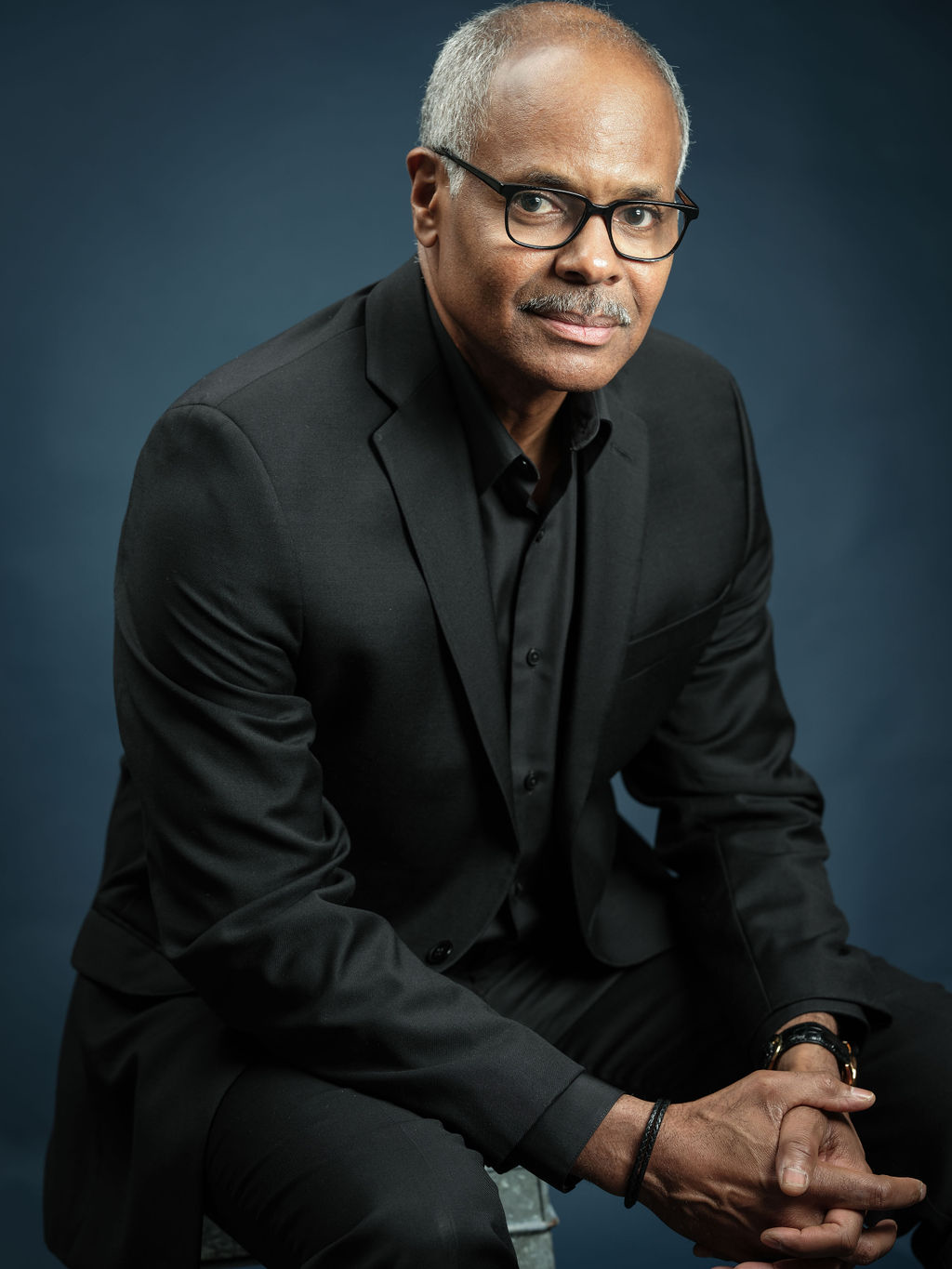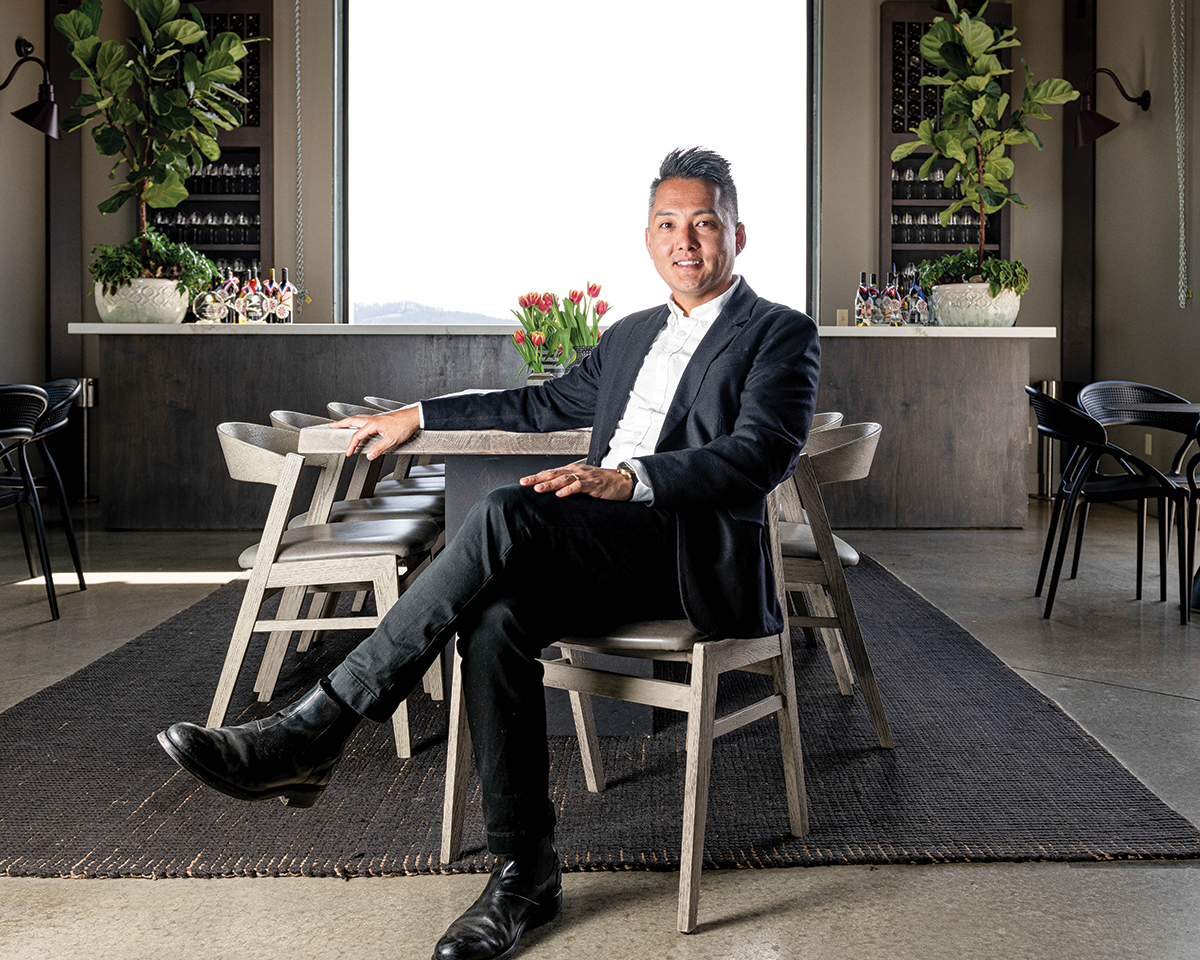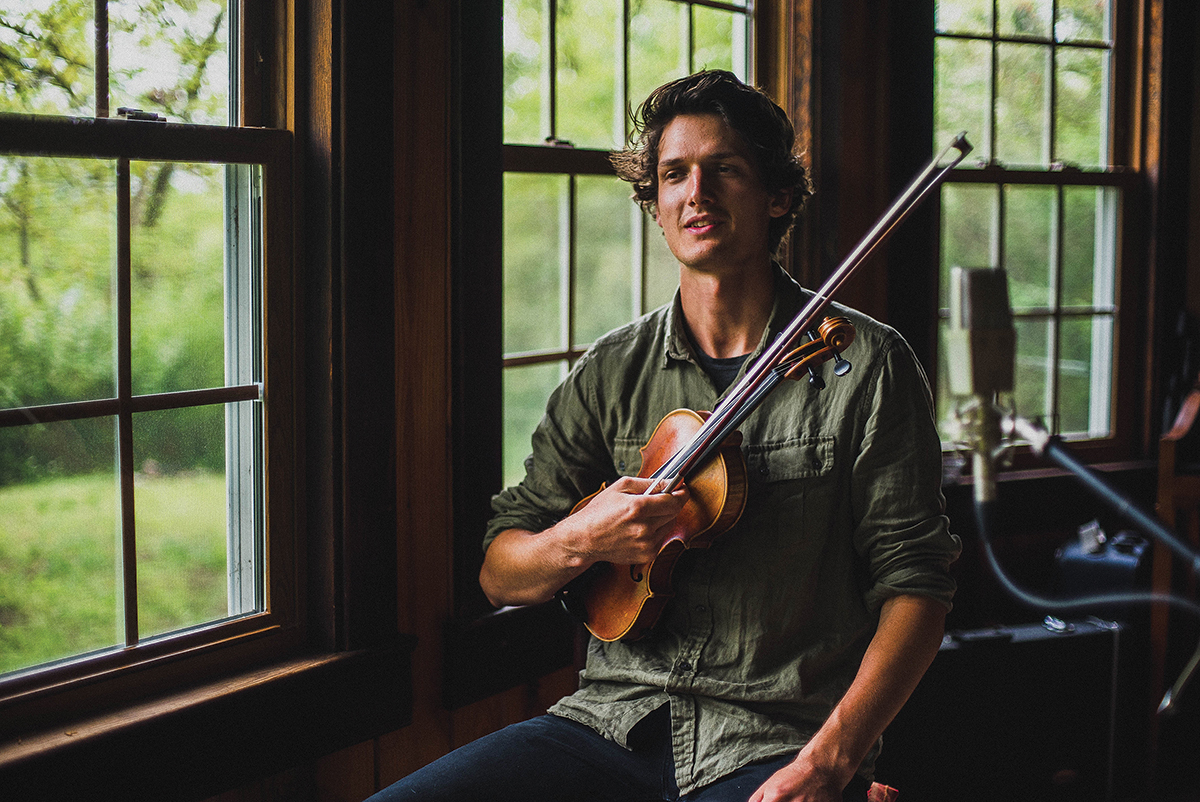Japanese-style pottery kiln opens at Blue Ridge Community College

HOT TAKE
Preston Tolbert built a kiln so big humans can fit inside it.
Photo by Rachel Pressley
It looks like what might be the world’s biggest wood-fired brick oven. About as big as a minivan. But instead of a gourmet pizza being slid in the opening for a few quick minutes of flame cooking, unfinished ceramic pots — hundreds of them — are top-loaded into the kiln for days of high-temperature firing. What comes out is pottery renowned for its unique colors and patterns.
It’s the new anagama kiln at Blue Ridge Community College in Flat Rock, designed and built primarily by Preston Tolbert of Statesville. There aren’t many of these historic Japanese-style kilns in the region, and this one being top-loading — rather than the typical side-loading or “groundhog” kiln — makes it only one of two known on the planet. (The other one is in Australia, according to Tolbert.)

The “flying, billowing” ash inside an anagama kiln results in signature patterns on the fired pots.
“Almost every other anagama loads from the end or the side, so you kind of have to crawl into the kiln,” Tolbert explains. “Then you have to build a door brick by brick to cover the opening. With this kiln, when you’re finished loading, all you have to do is slide the door over and lower it down with the jacks. Also, [since it’s] a teaching kiln, it’s nice to be able to look at all the pots in the kiln after you’re finished loading. You can see the way the flame will move through the kiln. When the firing is over, you can look from above and see all the results at once.”
“Blue Ridge Community College generally has a strong demand for ceramics classes,” says instructor Aaron Bernard, head of the school’s art department. “They usually fill up very quickly.” Flat Rock is located in a historically fertile ceramics area of the south mountains that includes Henderson and Transylvania counties, plus Saluda and Tryon in Polk County, “one of the largest potter communities in the country,” notes Bernard.

PROUD OF THE PROCESS
Blue Ridge Community College art instructor/department head Aaron Bernard, left, stands with kiln maker Preston Tolbert.
Photo by Rachel Pressley
In fact, word of the kiln has gotten out to ceramic artists around the Southeast. “It creates a decent amount of draw,” says Bernard, “and, by extension, brings people to the art department who might not have come otherwise. It certainly helps give BRCC character that other colleges might not have — it’s a great asset.”
Initially, it was Bernard’s initiative to replace one of the three electric kilns at the college that got Tolbert’s attention. “This was a group effort between Preston Tolbert, myself, and several other potters,” he says. “About a year ago, I requested money to build a new kiln to replace the old one. The money was approved by the administration; then Preston got the bid to build the kiln. From there, he and I worked together to determine the best design for the space and needs we had.”
Building was delayed by the pandemic, but construction started in June and was finished the first week of September. Since then, the kiln was slowly seasoned (heated for the first time) for a week to release the moisture and prevent extensive cracking in the bricks and concrete. It officially opened on Oct. 23, with many artists, faculty, and students in attendance.

Potter Doug Caulfield steps into the light of the one-of-a-kind kiln.
Photo by Rich Keen
This sort of kiln dates back to the 5th century in Korea. The design made its way to China and then to Japan, where it was named “anagama,” which means “cave kiln” — probably because the big, long, sloping apparatus was built by digging tunnels into banks of clay. BRCC’s anagama kiln is about 40 cubic feet (big enough for humans to get inside it to stack pottery) and will hold a couple hundred pots.

Ashton Keen, left, and Remo Pirachi are on hand for the first firing, with well-known local artist David Voorhees at right.
Photo by Rich Keen
Once fully loaded, the kiln reaches temperatures up to 2,350°F and will fire between 18 hours and four days, depending on the desired results. “When wood burns, it produces ash. When ash gets up to 2,350°F, it melts into glass,” explains Tolbert. “The flying, billowing ash in the kiln creates the glaze on the ware, resulting in beautiful patterns of drips and haloes.” Colors that commonly result are transparent green, rust red, steel blue, and pale violet.
Though the local anagama is as technical as advanced modern kilns, it’s fueled by wood, which has been used for “99% of the history of ceramics,” Tolbert points out. “Wood firing yields beautiful results, unachievable any other way. And fire is lots of fun.” He also points out that wood is a renewable resource. “It releases no more carbon than was sequestered by the tree as it was growing.”

David Voorhees masks up for the big reveal.
Photo by Rich Keen
Now that the kiln is fully operational, it will probably be fired up four or five times a year, Bernard says. For now, it’s limited to students and teachers, but eventually the college would like to offer it to regional artists as part of its community outreach.
“One of the best features of this kiln is that it takes a group effort, with work and knowledge shared, and growth and skill happening with each firing,” notes regional artist David Voorhees. “Most art forms do not emphasize group effort toward a common goal. This kiln will last for years, and teach much to all of us.”
Blue Ridge Community College, 180 West Campus Drive, Flat Rock. For more information about the anagama kiln, contact Aaron Bernard in the school’s art department, 828-694-1688, a_bernard@blueridge.edu.



